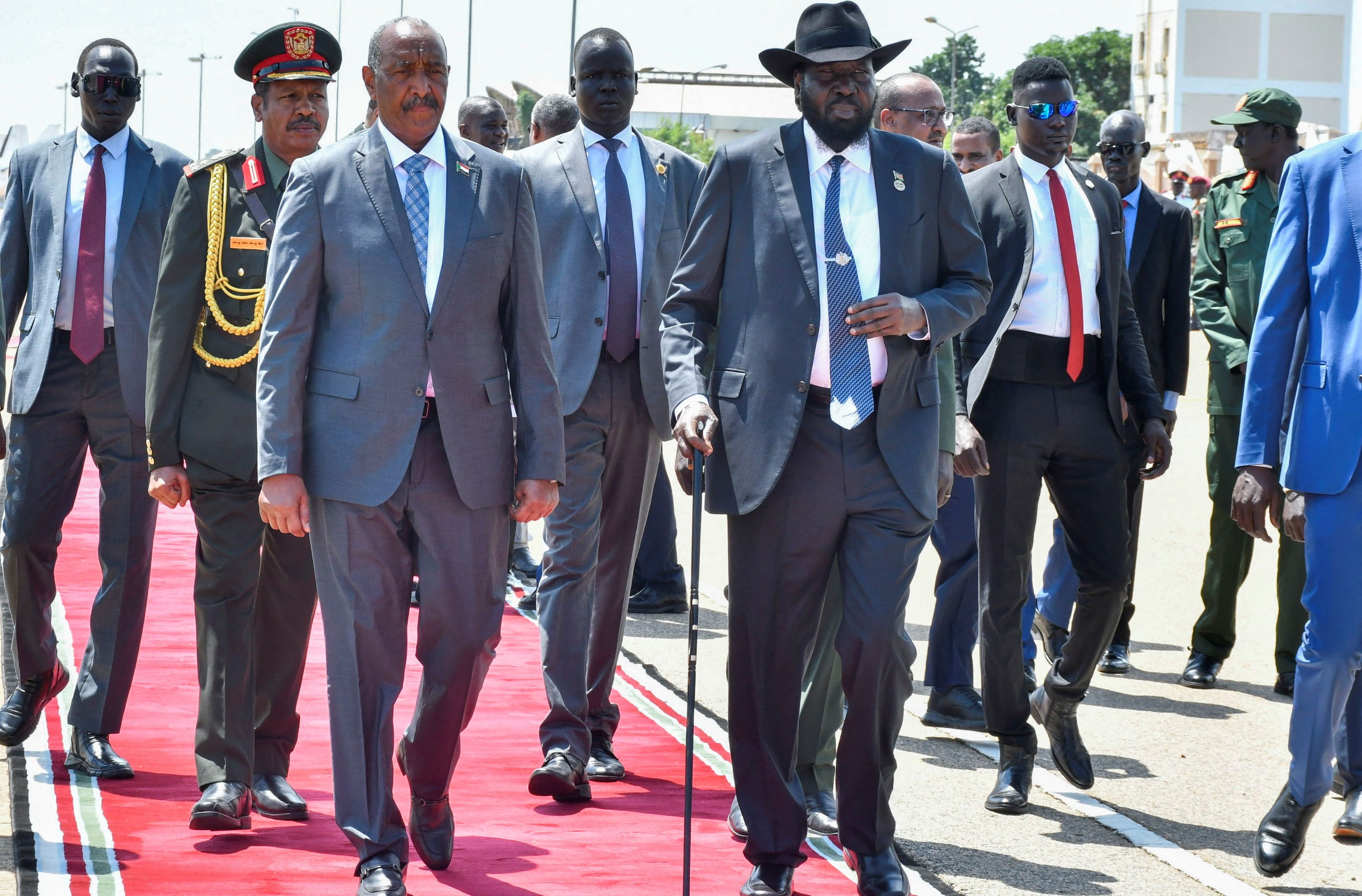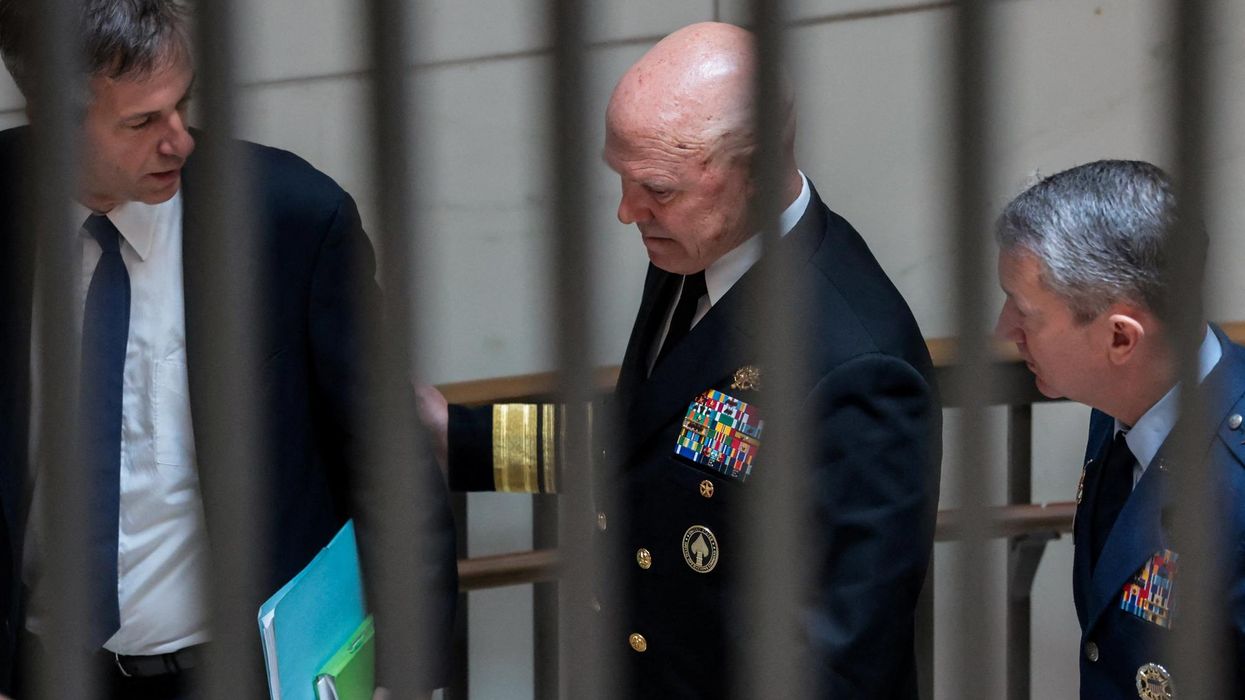The people of South Sudan are once again forced to flee their homes and endure severe hunger as the country is on the brink of civil war. The escalating violence and skyrocketing tensions between leaders in South Sudan threaten the country's stability and regional security and risk worsening the humanitarian crisis.
President Salva Kiir’s recent detention of the country’s main opposition leader, Vice President Riek Machar, and his aides is raising fears of military clashes and violence across the country between the national force (SSPDF) and the military wing of Machar's party (SPLM/A-IO).
On March 18, in response to the detention of its officials and the deployment of Ugandan forces, the SPLM/A-IO announced the immediate suspension of its participation in key security mechanisms established under the 2018 Revitalized Agreement on the Resolution of the Conflict in the Republic of South Sudan (R-ARCSS). Conversely, the government accused Machar of plotting a rebellion to disrupt peace and upcoming elections. The United Nations issued multiple warnings that South Sudan is on the verge of civil war and urged all sides to uphold the peace agreement.
Tensions have been building between the factions for months, with Kiir dismissing several officials from SPLM/A–IO without consultation. Furthermore, Kiir’s move to appoint businessman Benjamin Bol Mel as his successor, sidelining allies and the opposition, has further escalated tensions. Bol Mel has been on the U.S. sanctions list since 2017 for his role in government corruption.
The most recent outbreak of violence erupted on March 4, when the White Army, a youth militia loyal to Machar, seized control of Nasir, a town in oil-rich Upper Nile State, following intense fighting with government forces. The White Army militia also attacked a U.N. helicopter, which resulted in the killing of 28 SSPDF soldiers and one U.N. crew member.
In response, government forces launched air strikes on civilian areas with barrel bombs. The U.N. says the attacks killed 180 people, injured over 250, and caused at least 125,000 people to flee the area. The deployment of the Uganda People’s Defense Forces (UPDF) to support Kiir and the government further worsened the security situation as it violated the U.N. arms embargo, while the opposition charges that it is taking part in airstrikes and attacks in Upper Nile State.
The current situation carries similarities to early warning signs seen before the 2013-2018 conflict, such as accusations of attempted coups, violent clashes, a rise in misinformation, disinformation, and hate speech, both sides mobilizing people for confrontation, and the involvement of foreign forces.
Threats to South Sudan’s fragile peace
Political strife between Kiir and Machar dates back to pre-South Sudan independence in 2011 and comes from two main conflicting tribes in South Sudan, Kiir from the Dinka and Machar from the Nuer. Both were key figures in the Sudan People Liberation Movement/Army (SPLM/A), a rebel movement founded and initially led by John Garang (Dinka), which fought with Khartoum for independence.
However, leadership styles and differences in movement visions caused tension between Garang and Nuer colleagues, resulting in the infamous “1991 split” and the formation of the Nuer-dominated SPLM-Nasir faction. Machar ascended to vice president after his 1997 peace deal with the Sudanese government, which deepened tensions with Kiir and his allies. Both groups are accused of committing grave human rights violations in South Sudan.
Furthermore, lack of effective governance, corruption, unaddressed grievances and the ongoing competition for control over South Sudan’s resources and military forces are reasons for political deadlock that fuels violence.
A democratic election, as agreed in the 2018 peace deal, has been postponed multiple times. And given the ongoing political crisis, it’s unlikely there will be one any time soon.
Regional implications
Meanwhile, the war in Sudan between the Sudanese military under General Abdel Fattah al-Burhan and the paramilitary Rapid Support Forces (RSF) under General Mohammed Hamdan Dagalo “Hemedti” has significantly impacted South Sudan.
The conflict led to the destruction of key oil infrastructure in Khartoum, cutting off South Sudan’s primary source of income. Initially, President Kiir aligned himself with the Sudanese Armed Forces (SAF). However, as the RSF gained control over major oil facilities, Kiir realigned his support toward the RSF and its key sponsor, the UAE, to restore the flow of oil and gold crucial to South Sudan’s economy. This strained his relations with Al-Burhan and SAF.
Conversely, SAF might have reactivated its ties with Machar and SPLA-IO after Kiir and RSF grew closer. This suspicion is strengthened by reports indicating that the SPLA-IO has received weapons and other forms of support from SAF. Moreover, the recent fighting between SPLA-IO and RSF in Upper Nile and Blue Nile states signals a move by SAF to prevent RSF/SPLA-N movements in the border area and to squeeze them out of areas on the border with South Sudan.
The proxy war between South Sudan and Sudan, fueled by each government's support for opposing militias threatens to destabilize both nations and the Horn of Africa further, undermining already fragile peace processes. It could risk a full-scale conflict that could drag both countries into a direct war. In addition to Sudan, other neighboring countries like Uganda, Ethiopia, and Kenya face the prospect of increased refugee flows, cross-border insecurity, and economic disruption.
Next steps
The U.N., the Intergovernmental Authority on Development, the African Union, regional leaders, the U.S., Britain, France, Germany, the Netherlands, and Norway, as well as the European Union, have all called the South Sudanese leaders to de-escalate the crisis, release detained officials, recommit to peace, and resolve issues through dialogue.
Meanwhile, the recent U.S. aid cut will likely have severe impacts on the humanitarian crisis, weaken peacebuilding efforts, and diminish American influence and commitment. Instead of scaling back, Washington should combine diplomatic pressure on political leaders with consistent support for civilian protection and long-term peacebuilding initiatives. At the same time, it must ensure that aid is used appropriately and not diverted toward corrupt activities.
Furthermore, the United Nations Mission in South Sudan (UNMISS) must take all necessary actions to increase its protection of civilians in Juba, Bentui, and Malakal and establish temporary operating bases in conflict and high-risk areas in Western Bahr-el-Ghazal state, Western Equatoria state, Unity state, Jonglei state and in Upper Nile state, particularly in, Akobo, Nasir, Ulaang, and Longochuk. In addition, the U.N. Security Council and African Union should urge warring parties to immediately end unlawful attacks on civilians and to recommit to the peace agreement.
















